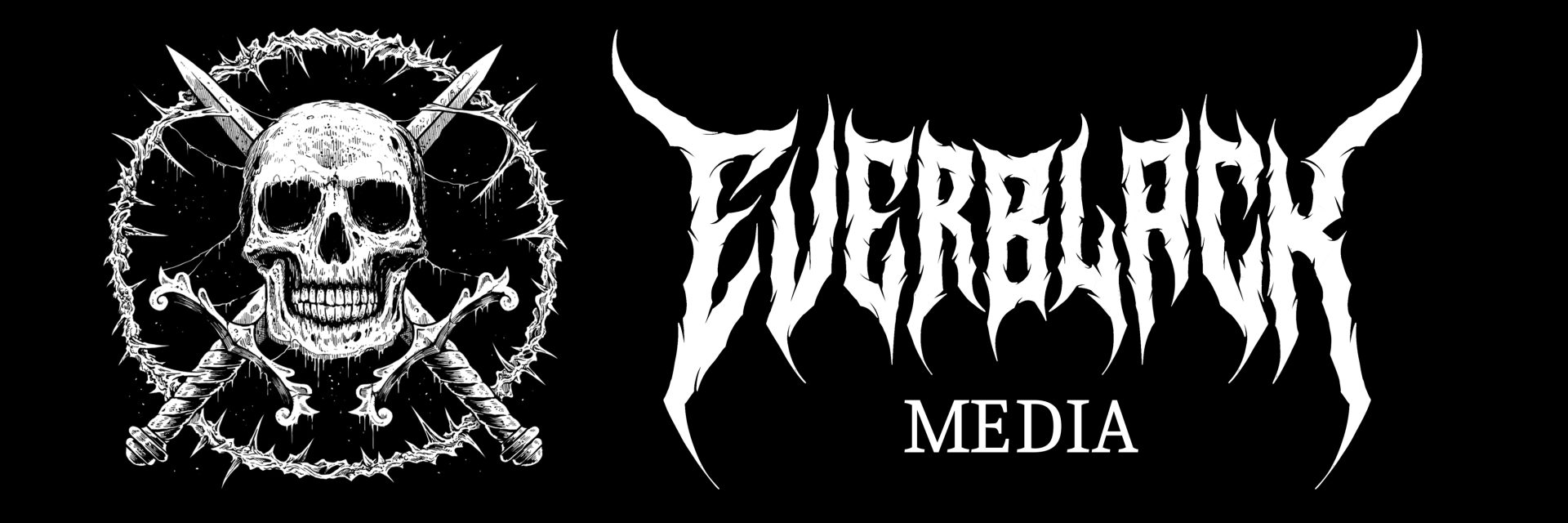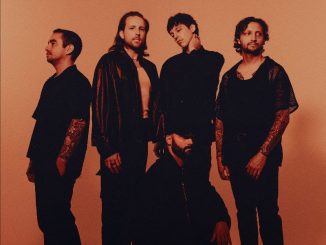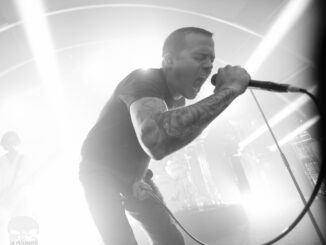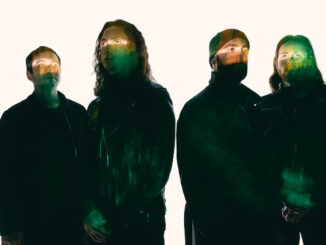
Prolific metalcore progressives ERRA are set to release their new album CURE, on April 5 via UNFD.
CURE is the band’s sixth album and it highlights and expands on the forward-thinking sound and guitar-driven style that the band has built its reputation on. Following 2021’s self-titled release, CURE is a stunning execution of both raw talent and surgical technicality. It’s as emotional powerful as it is musically proficient, which is not an easy feat to achieve. Yet ERRA make it look and sound easy. CURE is a sonic thrill ride — one that you hope will never end.
Vocalist J.T. Cavey and guitarist/vocalist Jesse Cash took the time to break down some of CURE’S key tracks to give a unique insight behind the record!
“Cure”
[CASH]: “Cure” was one of the last songs we wrote for the records. I had this groove riff that I was just so obsessed with, to the point that I wanted to stay with it for the full duration of the song. So even though the song stays in 4/4 for the most part, we’re always staying locked into this dotted sequence of on-rhythm guitars and kicks, making the rhythm feel complex yet easy to latch onto as a listener.
In the final breakdown section, we stay with this dotted sequence but switch the time signature to 6/8 for a few bars before reverting back to 4/4 to close out the song. These playful tinkerings with time signature serve as a suitable introduction to the approach we took with grooves throughout the whole record.
4. “Blue Reverie”
[CAVEY]: The record is all over the place; there’s a little bit of everything on there. That’s why “Blue Reverie” is one of the singles because we don’t want just to put out the “Snowbloods” and the “Gungraves”; we also want to put out the “Memory Fictions”. We want people to know the range of the record so they’re not just getting the same cookie-cutter singles, and then they think the whole record sounds like that. Because it definitely does not, and it never does with us. I think that the one thing that we do try to ‘force’ is thinking about the record as a whole, looking at the lyrics as a whole, and trying to find out and maintain this identity throughout the process. We want it to feel like its own own project every time. I think that is very important to us creatively.
5. “Slow Sour Bleed”
[CAVEY]: Dan [Braunstein, producer] is the encouraging parent on the sidelines. He’s not afraid to voice his opinion. But he’s always positive. He’s got a great attitude every single day. When we were in the studio, he was excited to work on it. He’s excited to create something with Jessie and I, to make something fun and awesome, something enjoyable for everybody. He’s got great ideas, and he also thinks differently from the two of us; that’s why we went to him. We went to him because we knew he would provide what we were looking for. All the synthy, John Wick-stuff, like on “Slow Sour Bleed”—that’s all Dan. I love the screaming chorus instead of a classic, soaring singing one. I don’t want to take too much credit, but I feel like I pressured them to do a screaming chorus.
9. “Crawl Backwards Out of Heaven”
[CAVEY]: Another favourite of mine. I’m a sucker for those heavy ones. [The synth incorporates] the melody from 28 Days Later. Go to the end of that song and then listen to the 28 Days Later opening theme; there’s some inspiration there. There’s like a haunting, weird note—Jesse loves finding the weird note and making it work. He’s really good at that. And I love how creepy it feels; it makes your skin crawl, and it’s super eerie, menacing and grimy. I like to think of The Machinist or The Dark Knight and all the tones and moods of those movies.
11. “Pale Iris”
[CASH]: The first half of the song is a long crescendo to get us into the bridge, where the song takes a darker turn and remains there until the end. Everything before is meant to create tension to serve that big release and make it as impactful as possible. The tuning drops five semitones in the bridge to further lend to the impact and shift of energy. It is essentially a song written for an 8-string guitar but executed on a 7-string thanks to the convenience of modern pitch-shifting.
I watched a 2017 Lovecraftian film called The Endless that had this scene where the protagonist realises a second moon has appeared in the sky. That scene always stuck with me. I can’t recall whether it was implied that the moons were the eyes of Cthulhu or directly suggested, but that concept was so fun to me to imagine there were two giant eyes looking down at us malevolently. From that, I imagined the idea of two coins over the eyes of a corpse resembling two moons over a lifeless earth staring into space.
12. “Wave”
[CAVEY]: I always like the heavy songs. But I will say I think “Wave” [might be my favourite] only because I love the ERRA songs that provide variety. And, selfishly, I love songs where I can kind of put myself through boot camp to try to show off stuff that I don’t normally do a lot of, or that’s, like, slightly out of my skill set that I have to like work on. Tracks where I really have to perfect and hone in on what I’m doing.
My rule is the 80% Rule: you track up to what you think you can do 80% live on the spot. So, do stuff out of your skill set that like might take ten seconds to record but actually takes you 30 minutes to get right. If it’s barely within your skill set, track it, and then work towards that to perfect it. So when you get to the stage, you’re now better.
CURE – DUE OUT APRIL 5
https://erra.lnk.to/CURE




